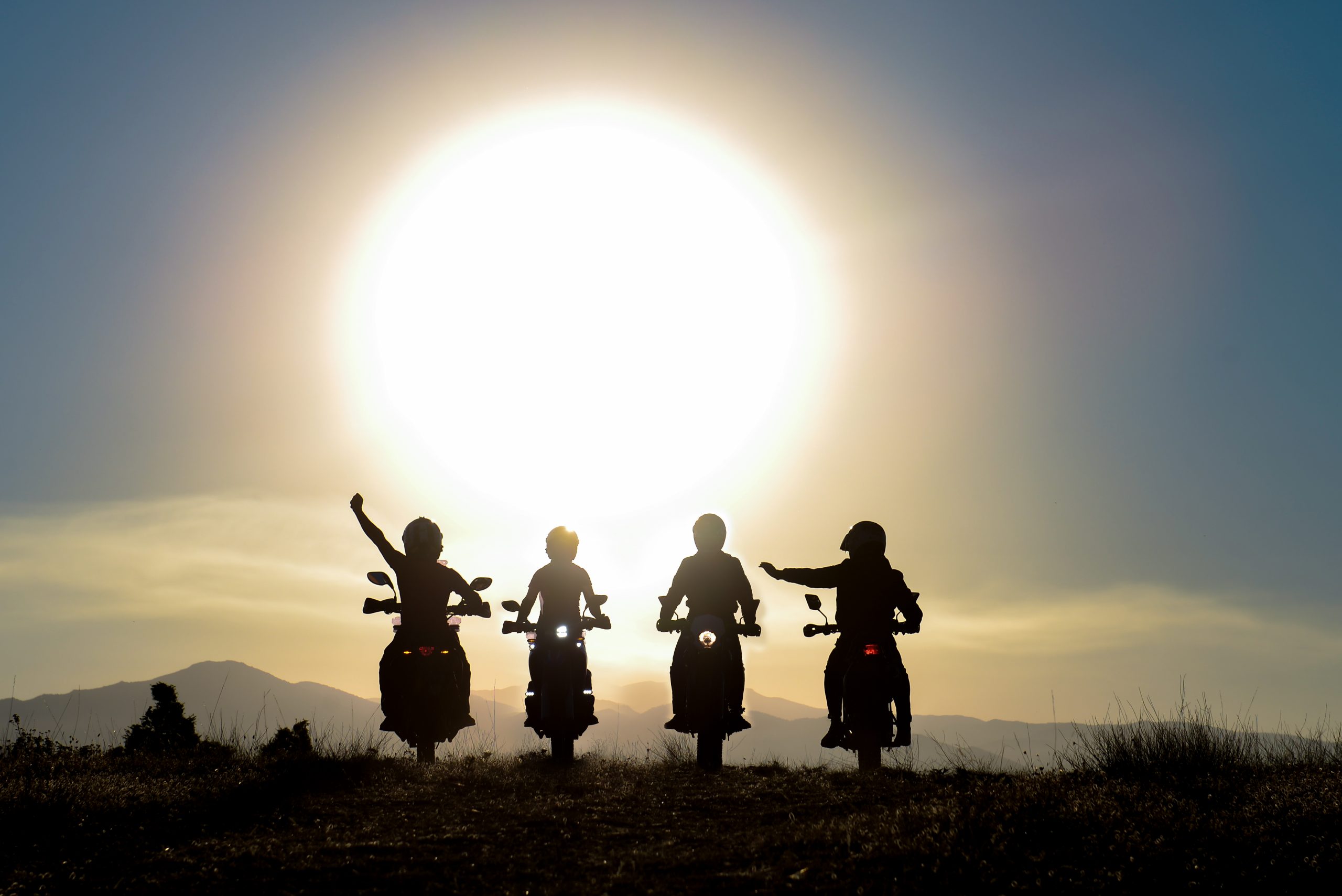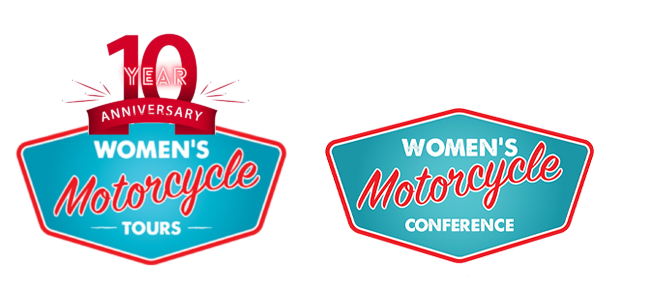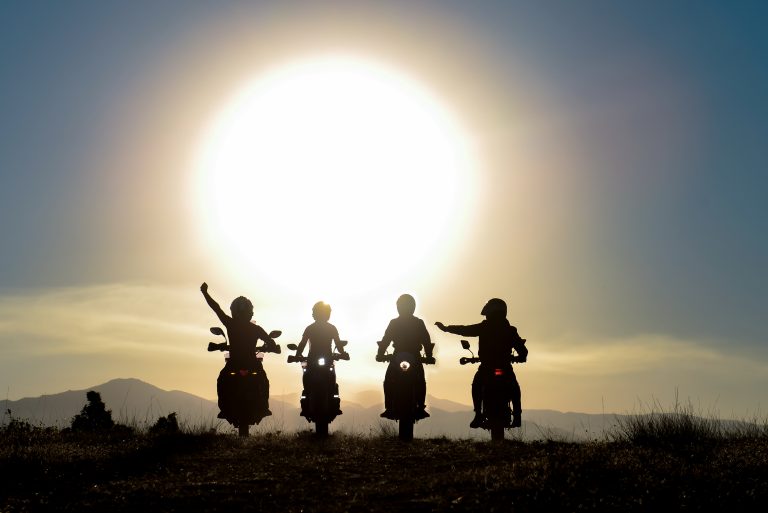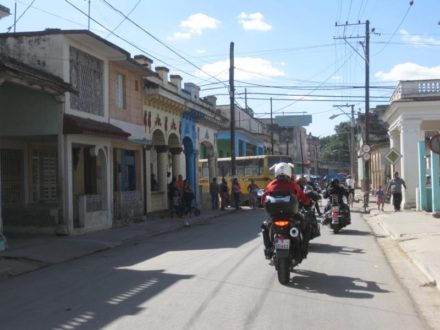
As a motorcycle tour developer and motorcycle tour guide, I have led hundreds of group rides over the years. When it comes to group riding, the experience can be enhanced for everyone with just a few simple best practices that ensure a smooth, safe, and fun motorcycle adventure. If you are planning your own group ride, here are some things that will help you keep everyone organized and safe.
Lay Some Ground Rules
As the group ride leader, it’s up to you to make the rules and make sure everyone follows them. Even if this is just a bunch of friends out for a ride, sticking to the ground rules will make the ride safer and help everyone to have a great time. Discuss what you want the ride to be like with the group members, decide on how many stops you’re going to have, who will be leading and who will be sweeping, and how are you going to stagger the riders. For me, it’s important to make sure everyone is on board with and follows my group riding rules, such as never overtaking the rider in front of you (I let people swap riding positions during a stop or a break, but never while riding).
Another rule (and best practice for group rides, especially off-road) is for each rider to keep an eye on their rearview mirror. If the rider behind you stops for whatever reason, you should stop, too. If everyone is following this rule, then the rider in front of them will stop, and so on until the chain reaction reaches the group leader who will stop and find out what’s going on. That way, everyone can wait for the person who has stopped. It’s very difficult for a lead rider to see more than 6 bikes in their rearview morrow, especially if the group is spread out. This method ensures that everyone has each other’s back, so nobody gets lost or left behind.
Evaluate Everyone’s Riding Ability
It’s important to make sure that everyone in the group feels safe and comfortable with the speed of the group. Generally, putting the slower riders in front and right behind the ride leader will help them ride smoothly, while faster riders can bring up the rear. (This also lets me, as ride leader, keep a closer eye on them.) If this is a group of riders new to riding together, decide your plan of action beforehand: Will the entire group will adjust to the speed of the slower riders, or will you split the group in two so that the faster riders can enjoy the road while the slower riders can travel at their own pace? It’s vital to discuss this before the ride so that everyone feels happy and supported.
Schedule Some Breaks
If you are going for a fun, leisurely ride for a few hours, this may not be essential. However, if the group ride is going to last for a few days or a week, it’s a good idea to schedule your stops and make sure everyone knows how long you are stopping for and when. This way, you can stop and rest, but still cover the distance and get to your destination. When everyone in the group starts and stops whenever they feel like it, the group will fall out of rhythm and it will be harder to manage both the distance and the time. On tour when I stop I tell the riders how long the stop will be and when we’ll take off again. That way everyone knows what to expect. It’s really easy to let your group breaks get longer and longer, especially towards the end of the day, which unfortunately only wears out the group and makes it less fun. Unmanaged breaks can also stretch the day so long that your new riders get a lot more tired and start making mistakes, or worse, ride beyond their comfort zones and/or into the dark of night.
Plan Your Activities
Are you going on a group ride to enjoy the twisties, or is it a sightseeing tour? Do you want to visit motorcycle museums or historic landmarks on your way? Will you have a rest day where you can enjoy a hike, a great dining experience, or a wine tasting tour? Talk about the ride objectives with the group members before you start rolling and make sure everyone is happy with the ride plan and activities along the way.
Check-in With Your Group Often
As the group leader, you will be responsible for the safety, happiness, and wellbeing of your riders. Make sure to check in with everyone several times a day both on a group and on an individual level to make sure everyone feels safe, supported, and continued to be excited and engaged. Sometimes, if there are new members in the group, there might be some personality clashes or little disagreements, and you will need to mediate those to make sure everyone enjoys a great time. Small problems in a group don’t go away, they just become larger problems over time. By managing expectations and sorting out problems as they arise, you’ll never have a small problem blow up into an unmanageable issue.
Ensure Everyone’s Safety
Before the group rolls out, ask everyone if they had recently serviced their bikes, checked their tires, and if everyone’s turn signals and brakes are working well. The ride leader should always carry a first-aid kit and perhaps a SPOT or InReach device if you are heading out on more remote off-road trails or backcountry. Always have your phone fully charged and have all the emergency numbers in your contacts in case you need to call for help. Mention to your riders that if they have an illness or condition that may compromise their safety, that they let you know ahead of time. Bee or wasp or food-allergic people should always have their epi-pen with them, and diabetics should always carry their meds with them, and they should also let their ride leaders know.
What have you done to ensure your group’s safety, or have you seen other ride leaders do that was particularly helpful? Leave a comment below and share your wisdom with your sister riders.





Comments
Dianna Knadel
I have always been told that if a rider behind you stop that the tail gunner (sweep) is the only one who should stop. Then try to meet up at the next stop.
MarieBernadett Gean
Have Everyone check their tire pressure. An over-pressured front tire at the last scooter rally I attended, on a borrowed scooter, steep and winding downhill curves resulted in a minor accident but it created a major splintered fibula in my right leg. Yes, lots of safety gear, and the scooter had a couple minor scratches but I ended up with 2 major surgeries, 2 plates and 19-20 screw/pins in that fibula.
Sylvia Henderson
Great post! Many of these pointers have synergy with leadership, period – whether for group rides, leading volunteers in organizations, or leading teams and staff in business. A good ride leader develops transferable skills to become a good leader.